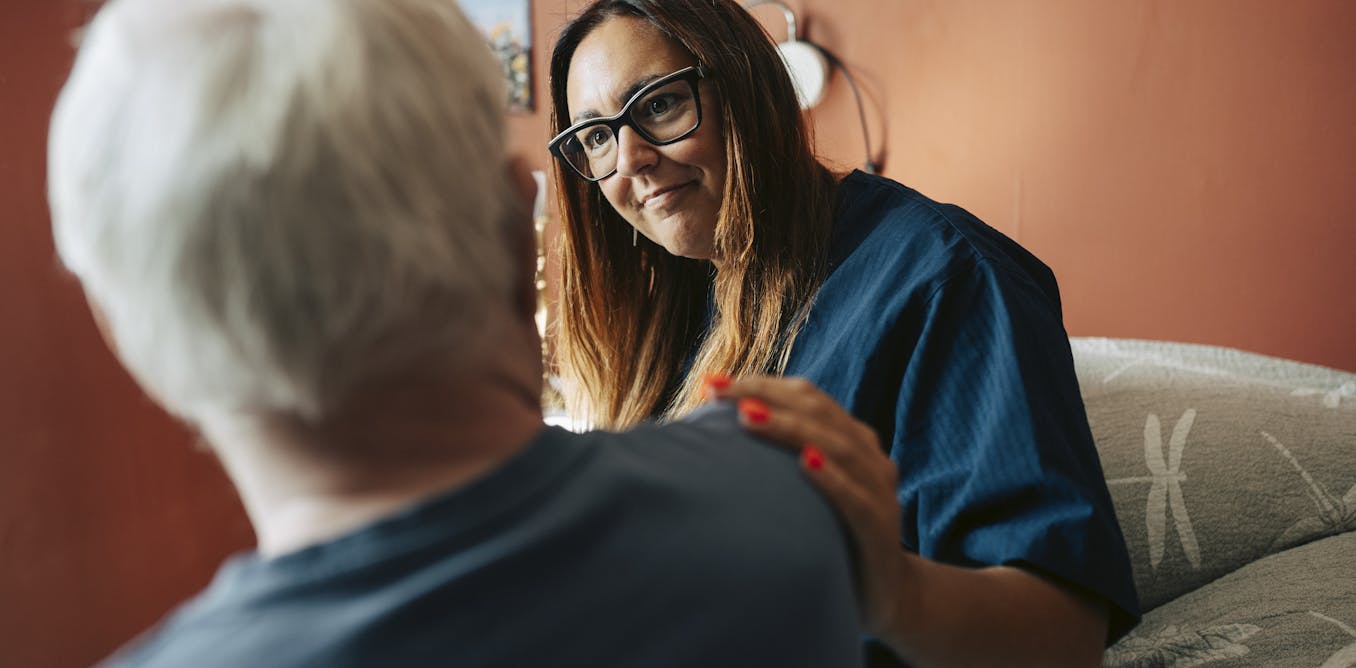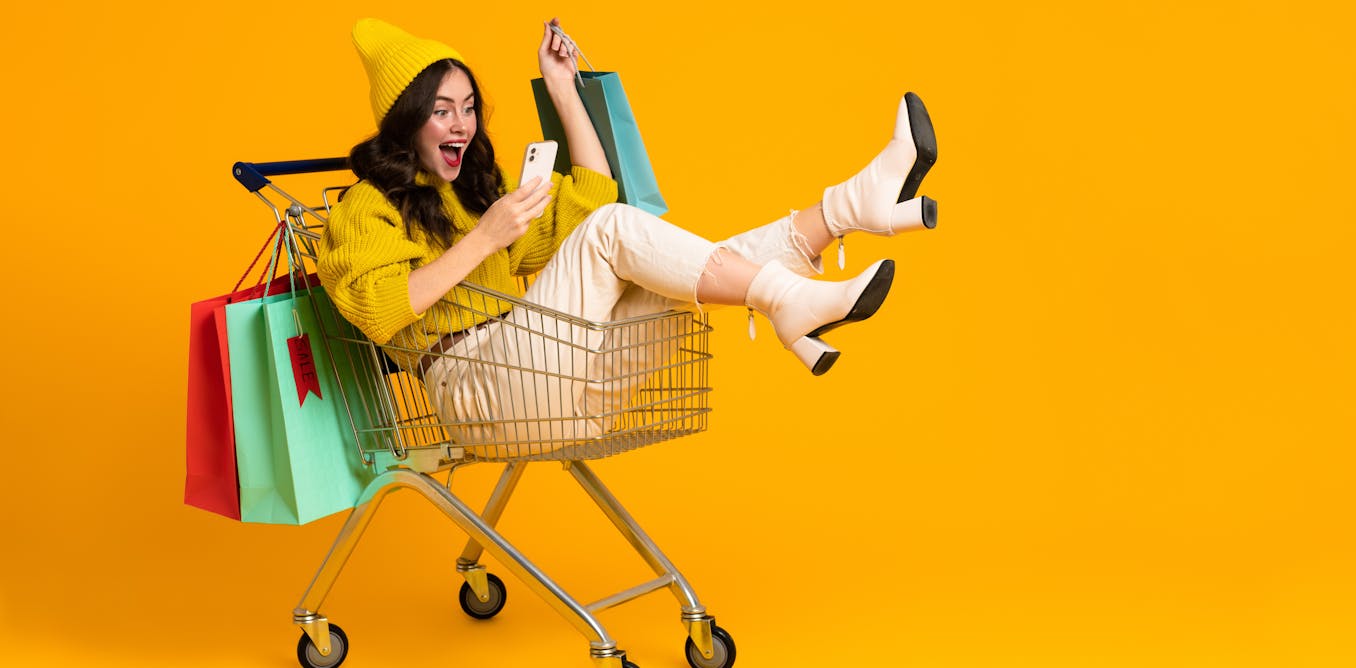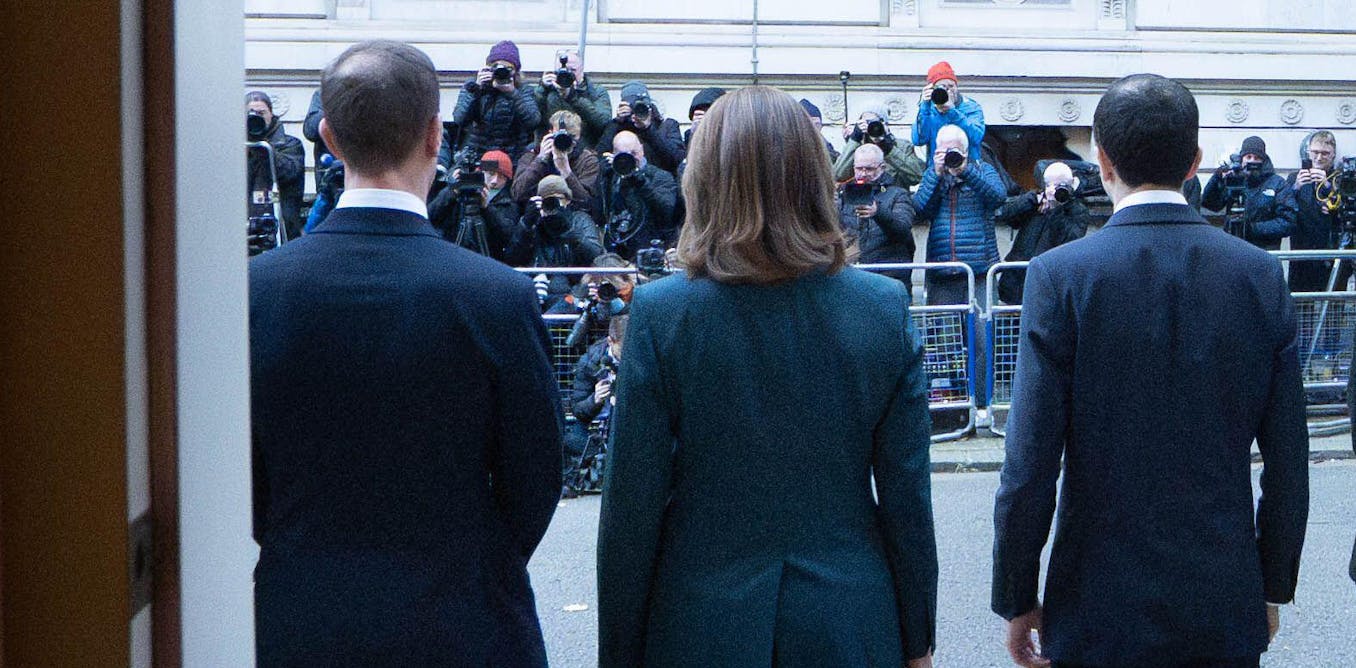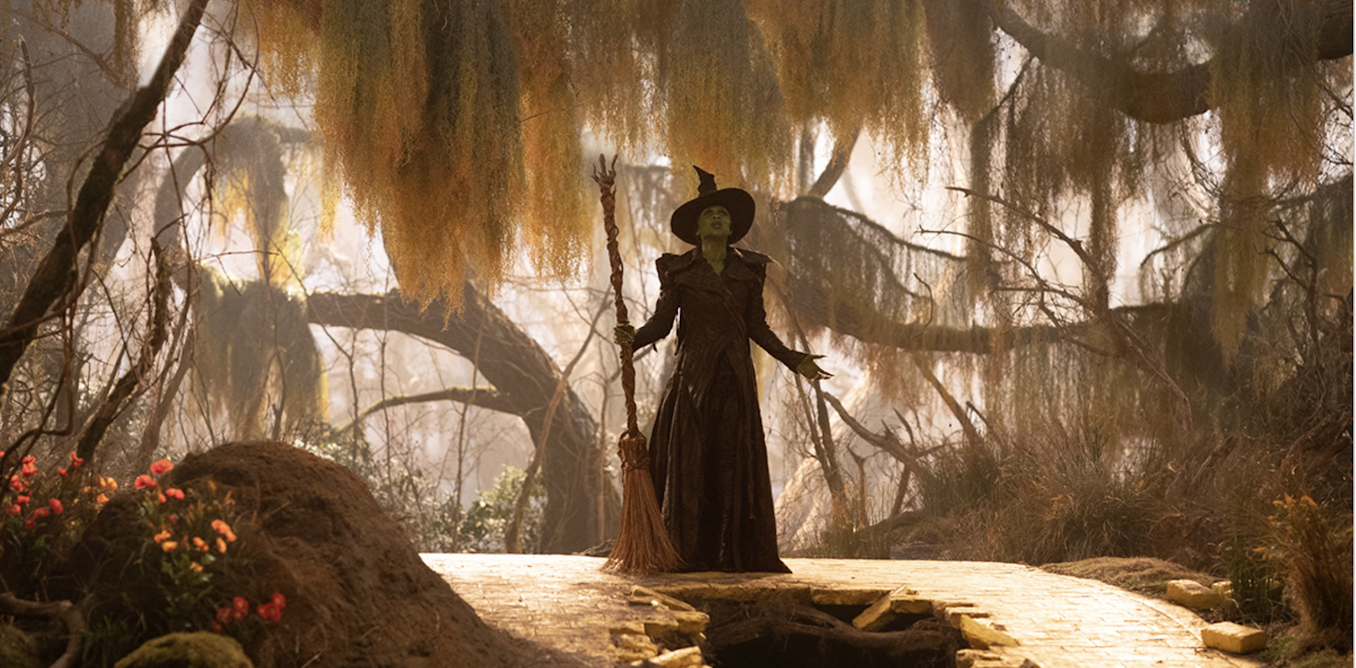In the 1970s, when the artist Joyce J. Scott was starting out, she crafted one-of-a-kind garments—glamorous and earthy looks made of materials including fur, snakeskin, and safety pins. She also plied her wild style in works of jewelry and sculpture that took on abstract and figurative forms, many of them ornamented by her signature beadwork. Her “Mammy/Nanny” sculpture series from the 1980s and ’90s includes Mammie Wada (1981), a doll-size figure of a Black woman seemingly bound, and made from an otherworldly assemblage of materials including crab claws, brass buttons, and synthetic hair. Many works play on racist tropes: Man Eating Watermelon (1986) is a bead-and-thread rendering of a Black figure writhing in an effort to escape entrapment in the freighted fruit. Another beaded figure, Buddha Gives Basketball to the Ghetto (1991), adds spirituality to the mix with the enlightened teacher holding a deflated ball and encircled by a ladder that seems to ascend to another realm. Time and again, Scott’s colorful creations stare down histories of racism, classism, and sexism with steely eyes and an impish grin. She takes a pointed and playful approach to bracing subject matter, the small-mindedness and absurdity of which she exposes as abhorrent and just plain dumb.
Scott’s fluid and free-spirited work—which also includes forays into comedy, music, theater, and performance of other kinds—is on full view in “Walk a Mile in My Dreams,” a retrospective currently at the Baltimore Museum of Art through July 14. The 75-year-old artist, who has called Charm City her home since childhood, is showing some 140 works spanning more than 50 years. Below, Scott discusses her hometown history, her capacity for craft, and how she’s navigated an evolving art world over the decades.
How has Baltimore informed and guided who you are as an artist?
My parents were sharecroppers from North and South Carolina who came to the “Up South” during the Great Migration. They got to Baltimore, and it allowed them to have a bit more agency and power in their lives. This city offered them the possibility of giving me the life that I have—the ability to become a MacArthur fellow and have a 50-year retrospective.
When I was growing up, Baltimore was much more prosperous than it is now. Unfortunately, stories these days are always showing boarded houses and Black men standing on the corner, but that’s only a pittance of what the city is really about. Baltimore, for me, is a city of largesse. When you are loved in Baltimore, it’s the best. You’re in a city filled with joy, filthy with artists, and packed with angst.
Your exhibition coincides with a Baltimore Museum show devoted to your mother, the late artist Elizabeth Talford Scott, who is also being celebrated with shows at eight other museums and colleges across the city. What does it mean to you to be showing your art along with hers?
It really speaks to a Baltimore ethos, where I, as a fabulous African American woman at three-quarters of a century old, get to do this. I was like, “What the fuck?!” (I cuss a lot, and I’m trying not to.) These young curators have given such deference to my mother and know things they probably shouldn’t. When you walk through my mother’s exhibition at the Baltimore Museum, it is mounted beautifully, and you are made aware of the consummate dignity and stank—that’s not stink but stank—and regality and oomph that my mother’s work has.
What’s something your mother taught you that has stuck with you?
The voice that I hear from my mother—she talks to me all the time, that rascal—says, “You’re worthy. And if you want it, go get it. Never stop.” We used to talk about having just one life. I, who have had some infractions in this life, probably will be reborn as a bee or as a bodily fluid—as something terrible. But as long as I’m a human being, I’m running it down. She packed me full of self-awareness, self-assuredness, and the ability to know that if this is it, I’m running for it. I’m not going to stop. And that is ever present in my artwork.
Your show opens with a newly commissioned installation titled The Threads That Unite My Seat to Knowledge (2024). Why did you want to begin with that?
This is one of my cockamamie ideas. I decided to make a dwelling that represents not only me and my brain but also the cozy, comfortable environment in which I grew up and became this person. On the outside are quilts made by my mother, grandmother, grandfather, and godmother because they swaddled me in my youth and gave me a lot of love. When I dreamed, I was on a magic carpet under those things.

Inside that installation, I’m showing large beaded pieces that talk about translucency and color—and just ass-kicking. There is a chair where I might sit if I’m in the museum, and tell stories and sing and talk. My mom brought me to the Baltimore Museum when I was a kid, when [Auguste Rodin’s] Thinker was still outside. You could jump all over him and try to find his genitalia and then walk up all those steps through the front door. The museum was one of my seats of knowledge. It was a place where I could perambulate and touch things I’m not supposed to. So it’s proper and apropos—and all those words—that I should be able to sit in this joint and disperse some common knowledge.
The title of the show alludes to a performance piece of yours called Walk a Mile in My Drawers (2006). What is the significance of that work to you?
The first retrospective I did here [at the BMA in 2000] was called “Kickin’ It with the Old Masters.” It was funny because when we were talking about it, people would say, “Do you really want to say masters?” This [new title] is a way to talk about the many facets of what I do as a performer, singer, and theater person, as well as a visual artist and an educator. Walk a Mile in My Drawers was a funny bon mot about fatness, about big girls, sexuality, all that stuff. “Walk a Mile in My Dreams” is about how I shall not be denied.
I’ve been loved. I’ve been given the fodder I need, and the nourishment. Some of that was money and food, but a lot of it was that little extra kick you need to take the next step—someone imparting knowledge to me and not making me feel either stupid or wrong to ask questions. To receive that is a big deal. And I would be remiss if I didn’t include race in this, because that can make it a really arduous task to exhibit work about social and cultural stuff and also use materials that people don’t necessarily understand as art. I’m a craftsperson and an artist all rolled into one. But people bemoan me saying I’m a craftsperson. “What?! Are you going to sing a Negro spiritual?” Well, I just might! I’m overwhelmed by this retrospective because it allows me to look at how I’ve walked so many miles in my dreams—and how I continue to do that.

You’ve made so many different kinds of art over 50 years. Are you surprised by any of your work? Are there things you can barely believe you made?
It’s the amount of work. If I make 10 necklaces a year and 10 sculptures, that’s 20 pieces of art. Multiply that by 50. And that’s a low number! And while I was doing that for a long time I traveled as a performer with Kay Lawal-Muhammad as the [variety act] Thunder Thigh Revue. I look back at that and think, Who the hell is that person?! Isn’t it wonderful that I wasn’t dissuaded and didn’t succumb to my fears—that I just kept walking?
How do you remember the Thunder Thigh Revue?
This was in the mid-’80s into the ’90s, at a time when Whoopi Goldberg was golden, and people like Mort Sahl—monologuists—talked about really heavy subjects in a comedic manner. It was a real adventure. We would do bits. We realized there were things that we needed to say, and we wanted to say them in a way that the audience would actually listen. A lot of our work was about being accepted for who you are. It was about larger women, about large Black women, about immigration; anything we heard, we went after. A lot of it was about who the messenger is and listening to what that messenger has to say. Because incumbent in that was our ethnicity, our weight, our gender, our class: you name it. That was very important for us.

It was also a kind of feminism for us. But we kept our clothes on. It was different than what I see young women doing now, shaking their butts and whatever. We were very aware of who was looking at us, because the majority of the time our audience was not 50 percent Black. We were very aware of the message we were sending out and what we looked like. We were aware that some of the “demons” we were talking about were sitting in the audience and lasciviously wondering what’s under that lace bustier. One of the things we always were tackling was how not to pander to that—to be real and true and honest. That’s very relevant in my artwork as well.
In the past few years there’s been a shift in terms of attention paid to African American art. How different or the same does it feel to you now?
I talk with friends sometimes and we say, “Didn’t this happen in the ’60s and ’70s and ’80s, when African Americans were everything, and everybody had on kente cloth and big afros? And everybody was an Indigenous person wearing bead work and whatever was the flavor of the month?” For me the real difference is that the folks who are doing it now are not 20th-century people. They’re 21st-century people who are part of a more global society. These kids aren’t who I was. They are very different people. The abundance of knowledge and accessibility that we really had to work for in the past is at their fingertips. And there are many, many more well-educated people of color. There’s still not enough, ever. But we have great examples.

You’ve done beaded works, blown glass, and worked with all kinds of different materials. Is there one way of working with which you have a special kinship?
Beadwork. I insinuate beads into anything. If I could make an edible bead and we could sprinkle it on top of ice cream, I would bead in a beautiful design, and then we’d eat it. It is a mesmerizing technique. My mother’s side of the family were craftspeople: basket workers, clay people, weavers, all kinds of things. One of the reasons I chose beads is because I could afford them. I could carry them with me, and they weren’t toxic—unless I ate them. The more I learned about them, the more I realized I had the facility to bend them to my will. And they are my lingua franca as a teacher. They’re one of those things you can teach, and while you’re working with your hands, you can talk to people about history, about power—you can apply it to just about everything.
What made you inclined to work across so many different art forms?
I took advantage of every opportunity. I was so hungry for knowledge. If knowledge is truly cumulative, then being able to relay and pile on from the past and also unite that with what’s happening now … If I live, what the hell will I be doing in 2030? I’ll be in a wheelchair, but I’ll be rocking, baby.

The post “Joyce C. Scott’s Beaded Sculptures Confront Racist Tropes” by Andy Battaglia was published on 05/31/2024 by www.artnews.com





































